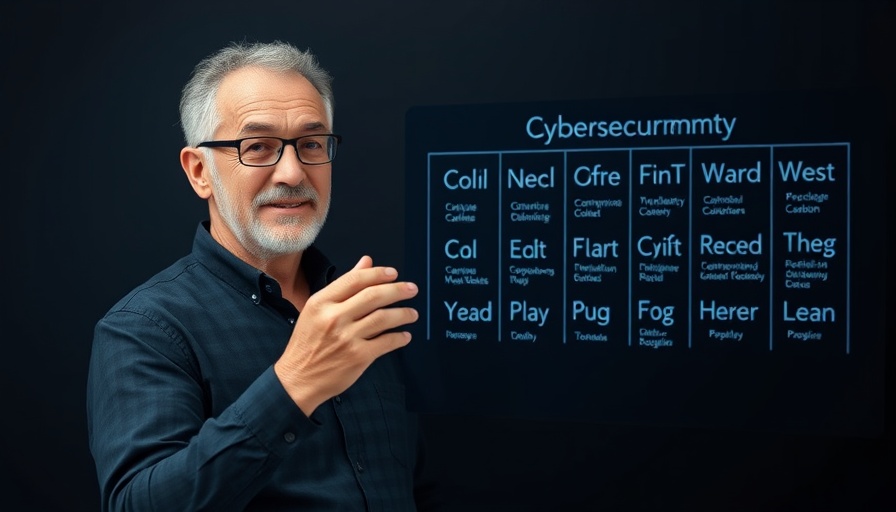
Decoding Cybersecurity: The Three Key Acronyms
In today's digital age, understanding cybersecurity is pivotal for anyone involved in technology or innovation. It might seem daunting, but breaking it down to three primary acronyms can simplify the complexity. The foundation of any robust cybersecurity strategy is built on the principles outlined by the CIA: confidentiality, integrity, and availability.
In 'Cybersecurity Acronyms Explained', the discussion clarifies essential principles of cybersecurity, shedding light on why understanding these acronyms is crucial for stakeholders in the technology landscape.
Understanding the CIA Triad: The Pillars of Cybersecurity
The acronym CIA encompasses three essential components:
- Confidentiality: This ensures that sensitive information is accessed only by authorized users. In an era where data breaches are commonplace, maintaining confidentiality is paramount.
- Integrity: Integrity guarantees that data remains unaltered during storage or transfer. Keeping data intact prevents unauthorized changes that can lead to catastrophic decisions based on corrupted information.
- Availability: This aspect ensures that systems and data are operational and accessible whenever needed. Cyber attackers often aim to disrupt this availability to achieve their malicious objectives.
Achieving these three goals creates a secure digital environment where innovation can flourish.
How Do We Achieve CIA? Enter PDR
To implement the CIA principles effectively, cybersecurity relies on the PDR model: prevention, detection, and response.
- Prevention: This proactive approach involves measures to safeguard systems against potential threats, such as firewalls and encryption.
- Detection: Detecting breaches or vulnerabilities is crucial. Effective monitoring tools help identify threats before they escalate.
- Response: A rapid response mechanism can minimize damage and restore normal operations after an incident.
The integration of these actions allows organizations to maintain a state of readiness in their cybersecurity operations.
The Synergy of People, Processes, and Technology
No cybersecurity strategy can succeed without a balance of people, processes, and technology. Each component plays a vital role:
- People: Skilled professionals are needed to monitor systems, analyze data, and respond to threats. Training and awareness programs ensure that everyone understands their role in maintaining cybersecurity.
- Processes: Established procedures streamline the cybersecurity framework. This includes regular reviews, updates, and incident response plans that dictate actions during a breach.
- Technology: Advanced tools and platforms automate many processes, enhancing efficiency and enabling real-time defense against cyber threats.
When these three entities work together, they form a robust cybersecurity framework that is adaptable to the ever-evolving landscape of threats.
The Ongoing Challenge: Vigilance is Key
The cybersecurity landscape is dynamic; bad actors continually evolve their tactics. Therefore, recognizing that cybersecurity efforts must be constant is essential. Cyber threats operate 24/7, making it vital for organizations to be just as vigilant and proactive at all hours.
For VCs and innovation officers, understanding these foundational elements of cybersecurity is critical. In a world increasingly dependent on technology, cybersecurity cannot be an afterthought but a core element of strategy and growth. By addressing the principles of CIA and the PDR model, they can ensure their investments and innovations are well-protected.
In summary, cybersecurity can be navigated effectively by grasping its fundamental components. By focusing on confidentiality, integrity, availability, and embracing prevention, detection, and response, stakeholders can create a secure environment vital for innovation. As we continue to tackle emerging technologies, let’s not underestimate the importance of robust cybersecurity measures.
 Add Row
Add Row  Add
Add 




 Add Row
Add Row  Add
Add 

Write A Comment